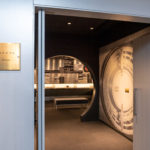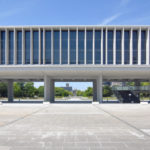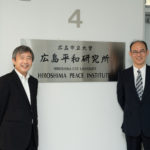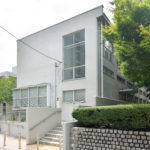Hiroshima City Ebayama Museum of Meteorology (The Former Hiroshima Local Meteorological Office)
The Hiroshima City Ebayama Museum of Meteorology is a museum with the theme of meteorological phenomena and science, where visitors can observe weather monitoring and forecasting and experience simulated torrential rain and storms. The museum can be enjoyed by adults and children alike. Damaged in the atomic bombing in 1945, the museum’s building was designated an important tangible cultural property by the Hiroshima City Government in 2000. This building also appears in YANAGIDA Kunio’s novel “A Blank Weather Chart (Kuhaku no Tenkizu).” Let us now introduce the Hiroshima City Ebayama Museum of Meteorology.
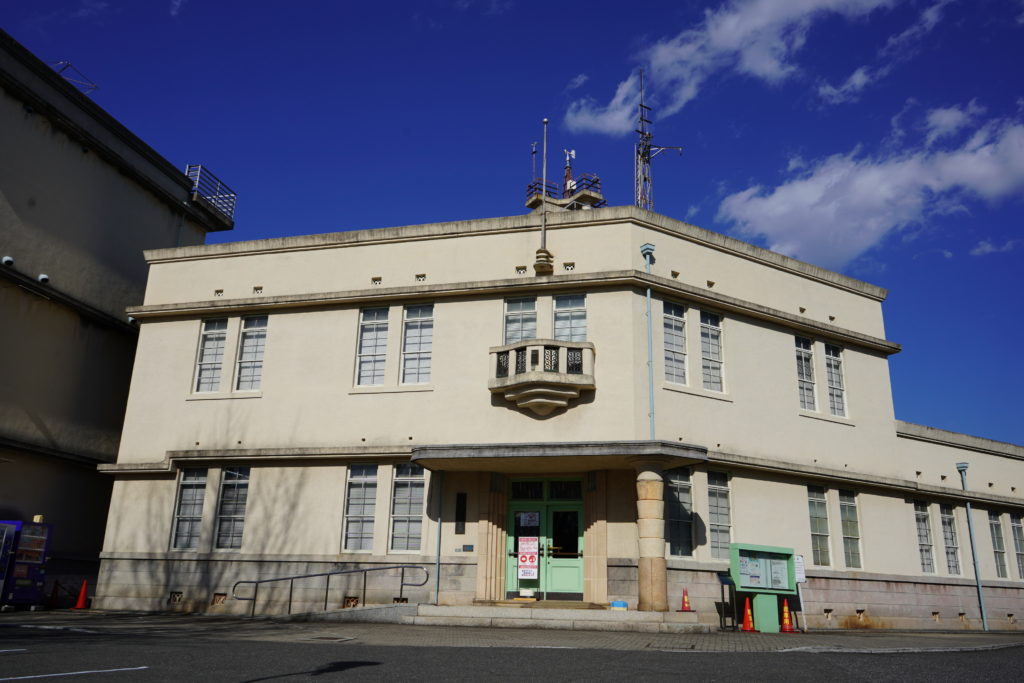
History of Hiroshima City Ebayama Museum of Meteorology
The history of the museum’s building began when it was first constructed as the Hiroshima Prefectural Hiroshima Weather Station in 1934. The original building, made of reinforced concrete, combined features of pre-war architecture and new modern design. It demonstrated excellence in architectural design and technology.
The Hiroshima Prefectural Hiroshima Weather Station officially started to operate on January 1, 1935. Until then, meteorological observation had been conducted at a weather station in the village of Kokutaiji (present-day Senda-machi, Naka-ku, Hiroshima City). Due to some factors—an increasing number of houses and other buildings surrounding the weather station in Kokutaiji began to interfere with observation of wind speed and other meteorological conditions, and city trains passing in front of the weather station were likely to affect seismic observation—Mt. Eba was chosen as the ideal relocation destination.
In 1939, the weather station was nationalized and renamed as the Hiroshima Weather Station of the Central Meteorological Observatory.
Later, all the government meteorological offices were put under the control of the Ministry of Transportation and Communications, and the Hiroshima Weather Station was renamed as the Hiroshima Local Meteorological Office. Then, in 1987, the meteorological office was relocated to the government office complex in Hacchobori, Naka-ku, Hiroshima City.
Pre-war reinforced concrete buildings ceased to be constructed around 1934 due to the Pacific War. Therefore, the building of the former Hiroshima Local Meteorological Office can be regarded as one of the last pre-war reinforced concrete buildings. With features of pre-war architecture, such as vertically long windows typical of the brick buildings in the Meiji era (during the late 19th century and the early 20th century), the building was designated an important tangible cultural property by the Hiroshima City Government in 2000.
Damaged in the atomic bombing on August 6, 1945
When the Pacific War broke out in 1941, the Japanese government imposed a media blackout on all weather information, under which weather forecasts and weather observation data became military secrets and were no longer allowed to be released to the public. Nevertheless, weather observation continued at local meteorological offices in Japan.
On August 6, 1945, an atomic bomb was dropped on Hiroshima. Mt. Ebara, where the Hiroshima Local Meteorological Office was located, was less than five kilometers from ground zero. Its building was a sturdy reinforced concrete structure. However, the blast was so powerful that all the steel window frames were bent as if they were soft candy and that almost all the glass windows were shattered and scattered. Inside the building, more than half of the doors were blown off and shards of glass windows stuck into concrete walls. Such shards still remain in some of the walls.

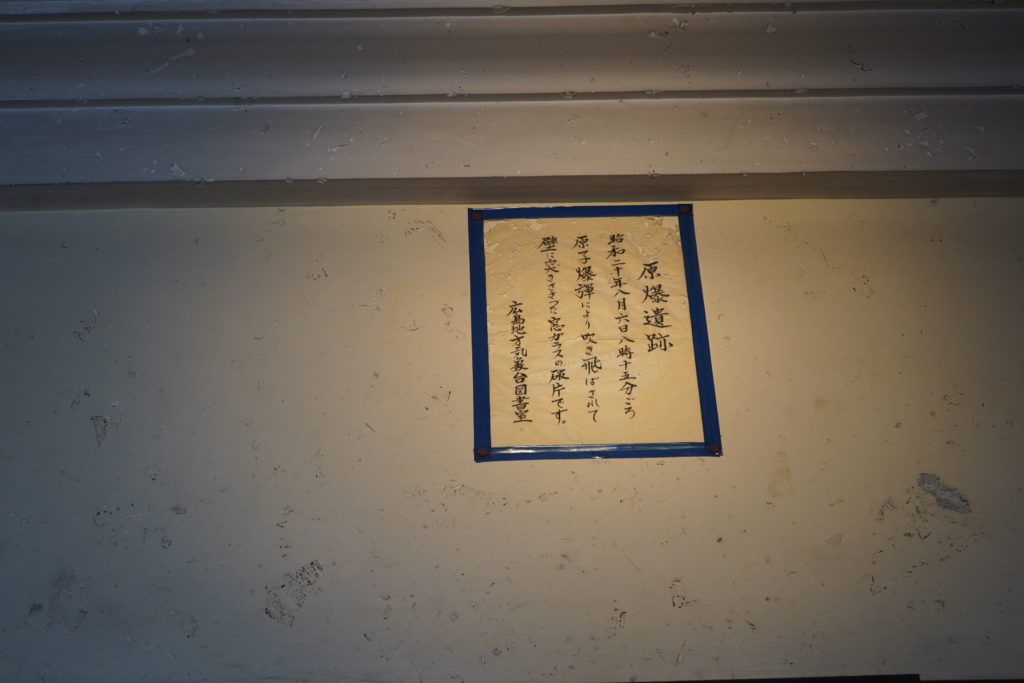
Wall with glass shards stuck in it (See the area marked in red.)


All the staff were injured. Some were badly injured by flying debris, especially on their heads and exposed parts of their limbs, and covered in blood. In such a panicky situation, staff with minor injuries gave first aid to those with serious injuries, such as severe burns all over their bodies caused by the heat waves to which they were exposed outdoors, and took them to nearby hospitals.
Among all the meteorological equipment at the facility, a seismometer was broken, but an anemometer tower and an instrument shelter in the observation field were undamaged, so weather observation continued at the facility. The remaining observation records show that even under difficult circumstances, staff continued to conduct weather observation without a day’s break. This is one aspect of the spirit of observers advocated by OKADA Takematsu, the father of meteorology in Japan and embraced by the staff. Okada explained the spirit of observers as below.
“The spirit of observers is different from that of soldiers. It is the spirit of scientists. Each natural phenomenon does not repeat itself. The purpose of meteorological observation is to record each natural phenomenon accurately. You should not miss the opportunity to observe each natural phenomenon, which will never happen again. If you miss it, the value of the entire observation data will decline significantly. On top of that, if you fabricate data or record natural phenomena inaccurately, you will be a disgrace to scientists.”
The entry in the duty logbook of the Hiroshima Local Meteorological Office for August 6, 1945 describes what happened after the atomic bomb was dropped on Hiroshima.
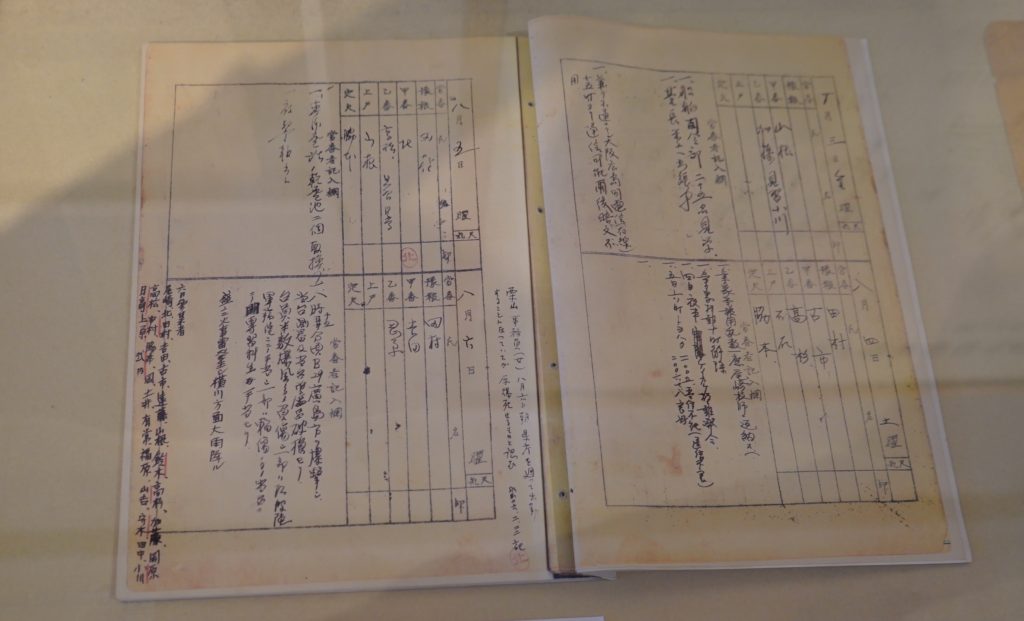
“At around 8:15 a.m., a B-29 bombed the city of Hiroshima, destroying our measuring equipment and facilities.
Half of the staff were injured by the blast, some were treated at the Eba Army Hospital, and those slightly injured were given first aid by our short-term internship students.
Many fires and much lightning and thunder were observed. Heavy rain fell in the Yokogawa area.”
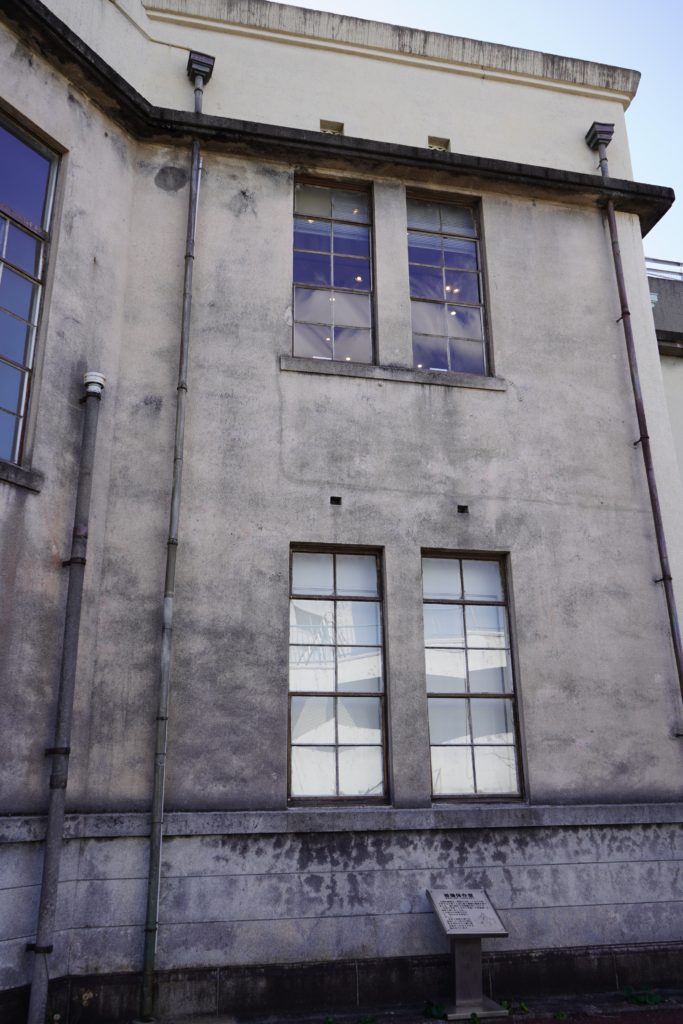
Some of the walls of the building damaged in the atomic bombing are still preserved as they were
Hiroshima struck by Makurazaki Typhoon on September 17, 1945
On September 17, 1945, about a month after the atomic bombing, a typhoon made landfall near Makurazaki in southern Kyushu. As the typhoon was expected to hit Hiroshima, at 10 a.m. on the 17th, the Hiroshima Local Meteorological Office issued a weather advisory, warning “as the typhoon approaches, strong winds and heavy rain are expected from tonight,” as well as a weather warning for railway operators. The communication facilities at the meteorological office had not yet been restored by then, so some of the staff were sent to the Eba Post Office, where phone lines had already been restored, in order to communicate the weather advisory to the city and prefectural governments and the weather warning for railway operators to the Hiroshima Railway Bureau. However, the organizations that received such information could not communicate it to the public because their communication systems were still paralyzed due to the damage caused by the atomic bombing. Moreover, local news agencies were still not fully prepared to resume their role as information providers to help protect the public from the coming typhoon.
YANAGIDA Kunio’s novel “A Blank Weather Chart (Kuhaku no Tenkizu)” describes in detail how the metrological office staff struggled to continue their work, with the communication facilities not yet restored and with damage still lingering from the atomic bombing.
Reference
“Record of the Hiroshima A-bomb War Disaster (Hiroshima Genbaku Sensaishi)”
“A Blank Weather Chart (Kuhaku no Tenkizu),” YANAGIDA Kunio (Bunshun Bunko series)
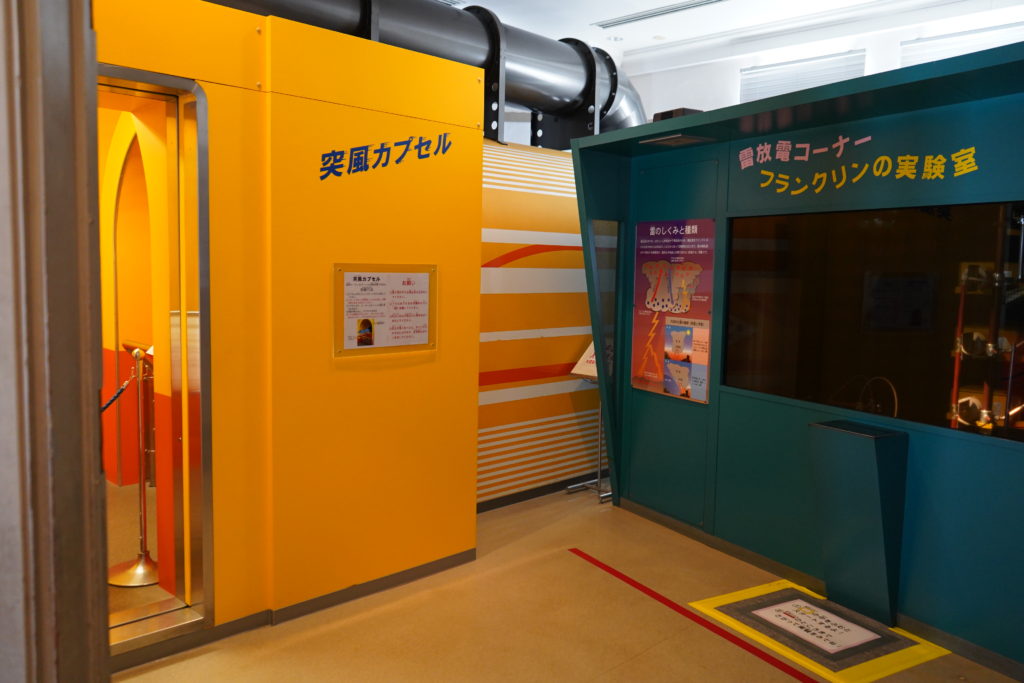
The Hiroshima City Ebayama Museum of Meteorology has a facility that allows visitors to experience simulated storms.
Tags associated with this article



